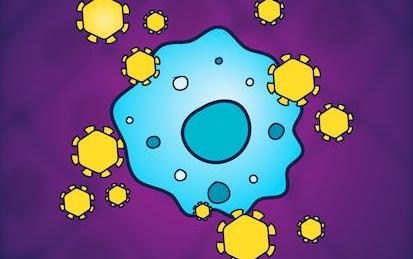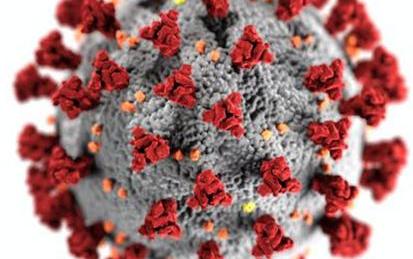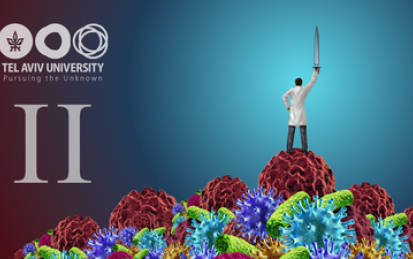

Our Courses

Epidemiology: The Basic Science of Public Health
Often called “the cornerstone” of public health, epidemiology is the study of the distribution and determinants of diseases, health conditions, or events among populations and the application of that study to control health problems. By applying the concepts learned in this course to current public health problems and issues, students will understand the practice of epidemiology as it relates to real life and makes for a better appreciation of public health programs and policies.
-
Course by

-
 Self Paced
Self Paced
-
 7 hours
7 hours
-
 English
English

Epidemics - the Dynamics of Infectious Diseases
Not so long ago, it was almost guaranteed that you would die of an infectious disease. In fact, had you been born just 150 years ago, your chances of dying of an infectious disease before you've reached the tender age of 5 would have been extremely high. Since then, science has come a long way in understanding infectious diseases - what they are, how they spread, and how they can be prevented. But diseases like HIV/AIDS, Malaria, Tuberculosis, or the flu are still major killers worldwide, and novel emerging diseases are a constant threat to public health.
-
Course by

-
 Self Paced
Self Paced
-
 17 hours
17 hours
-
 English
English

Nanotechnology and Nanosensors, Part 2
Learn about novel sensing tools that make use of nanotechnology to screen, detect and monitor various events in personal or professional life. Together, we will lay the groundwork for infinite innovative applications, starting from diagnosis and treatments of diseases, continuing with quality control of goods and environmental aspects, and ending with monitoring security issues. _ _ _ _ _ _ _ _ _ _ _ _ _ _ _ _ _ _ _ _ _ Nanotechnology and nanosensors are broad, interdisciplinary areas that encompass (bio)chemistry, physics, biology, materials science, electrical engineering and more.
-
Course by

-
 Self Paced
Self Paced
-
 17 hours
17 hours
-
 English
English

Epidemics
“If history is our guide, we can assume that the battle between the intellect and will of the human species and the extraordinary adaptability of microbes will be never-ending.” (1) Despite all the remarkable technological breakthroughs that we have made over the past few decades, the threat from infectious diseases has significantly accelerated.
-
Course by

-
 Self Paced
Self Paced
-
 47 hours
47 hours
-
 English
English

Developing the SIR Model
Compartmental modelling is a cornerstone of mathematical modelling of infectious diseases and this course will introduce some of the basic concepts in building compartmental models, including how to interpret and represent rates, durations and proportions. You'll learn to place the mathematics to one side and concentrate on gaining intuition into the behaviour of a simple epidemic, and be introduced to further basic concepts of infectious disease epidemiology, such as the basic reproduction number (R0) and its implications for infectious disease dynamics.
-
Course by

-
 Self Paced
Self Paced
-
 21 hours
21 hours
-
 English
English

Nanotechnology and Nanosensors, Part1
Nanotechnology and nanosensors are broad, interdisciplinary areas that encompass (bio)chemistry, physics, biology, materials science, electrical engineering and more. The present course will provide a survey on some of the fundamental principles behind nanotechnology and nanomaterials and their vital role in novel sensing properties and applications. The course will discuss interesting interdisciplinary scientific and engineering knowledge at the nanoscale to understand fundamental physical differences at the nanosensors.
-
Course by

-
 Self Paced
Self Paced
-
 12 hours
12 hours
-
 English
English

Global Disease Masterclass: Communicable Diseases Epidemiology, Intervention and Prevention
This course is all about infectious diseases. We’ve selected four disease areas — HIV, Malaria, Emerging Infectious Diseases (Ebola and Zika), and TB — and we will go through each in turn. We’ve selected these diseases because they span a range of different types of disease and allow us to look at important issues that relevance of other diseases too. We will look at each disease in the same way: we begin by looking at the aetiology and epidemiology of the diseases. We then show how data on this disease can be used to understand important trends and patterns.
-
Course by

-
 Self Paced
Self Paced
-
 18 hours
18 hours
-
 English
English

Extracellular Vesicles in Health and Disease
This course aims to provide current understanding about extracellular vesicles (EVs) and their role in health and diseases. The EVs are known to be involved in cell to cell communication. Apart from maintaining normal cell physiology, EVs deliver messages that can drive or influence the progression of a disease. This course discusses recent advances made in the field to give an introduction on their function in health as well as in disease.This course includes four modules.
-
Course by

-
 Self Paced
Self Paced
-
 12 hours
12 hours
-
 English
English

Infectious Disease Transmission Models for Decision-Makers
During the COVID-19 pandemic, both the promise and perils of using infectious disease transmission models to make public health policy decisions became clearer than ever. Optimal use of modeled output requires that public health policy makers be informed consumers of models, that they understand the strengths and limitations of possible approaches, and they know the right questions to ask about the vulnerabilities of the model results.
-
Course by

-
 Self Paced
Self Paced
-
 4 hours
4 hours
-
 English
English

Epidemics I
Explore the science, prevention and control of epidemics in this free online course. In addition to lectures by leading scientists in this field from HKU, this course will feature a supplementary module on COVID-19 and panel discussions with world-leading experts in epidemics.
This is the first (origins of novel pathogens) of the four courses, covers these topics:
-
Course by

-
 Self Paced
Self Paced
-
 English
English

Immunology: Immune System and Infectious Diseases
The constant struggle between pathogens and the human immune system has been posing a significant threat to our health for thousands of years. Infectious diseases remain the leading cause of death worldwide. These are typically caused by bacteria (intra- and extracellular), viruses, fungi, parasites (worms/helminths) and prions. Under normal circumstance, the immune response orchestrates a robust protection against these pathogens using both molecular and cellular mechanisms.
-
Course by

-
 Self Paced
Self Paced
-
 11 hours
11 hours
-
 English
English

Virology and Epidemiology in the Time of COVID-19
This course covers the science and social impacts of viral infectious diseases. We will begin by covering the basics: what a virus is, the structural and functional diversity of viruses, and how viruses use our bodies and the bodies of other organisms to replicate. Then we will dive into the human response: how our immune systems work to protect us from pathogenic viruses and how we use science and social systems to fend off viruses through vaccines and public health measures.
-
Course by

-
 Self Paced
Self Paced
-
 9 hours
9 hours
-
 English
English

Infectious Disease Modelling
Mathematical modelling is increasingly being used to support public health decision-making in the control of infectious diseases. This specialisation aims to introduce some fundamental concepts of mathematical modelling with all modelling conducted in the programming language R - a widely used application today. The specialisation will suit you if you have a basic working knowledge of R, but would also like to learn the necessary basic coding skills to write simple mathematical models in this language.
-
Course by

-
 Self Paced
Self Paced
-
 English
English

COVID-19 - A clinical update
As an expert in infectious diseases, editor of the Journal of Infectious Diseases and author of the textbook Infectious Diseases: A clinical short course, McGraw-Hill April 2020, I have been concerned about the misinformation being shared about the COVID-19 epidemic. How did this disease develop? Where did it come from? How does it cause diseases? The answers to these questions will be answered in the first video of module 1. The world has been startled and frightened by the rapid spread of this virus throughout the world. In Video 2 the epidemiology as presently understood is reviewed.
-
Course by

-
 Self Paced
Self Paced
-
 13 hours
13 hours
-
 English
English

Viruses & How to Beat Them II: Immunology Fundamentals & Applications
When we are attacked by viruses our bodies are not left helpless. Discover how our immune system fights infectious diseases, how vaccines protect us and how immune mechanisms have been implemented in our fight against Coronavirus.
-
Course by

-
 Self Paced
Self Paced
-
 English
English

Epidemics IV
Explore the science, prevention and control of epidemics in this free online course. In addition to lectures by leading scientists in this field from HKU, this course will feature a supplementary module on COVID-19 and panel discussions with world-leading experts in epidemics.
This is the last (communication of infectious diseases) of the four courses, covers these topics:
- Risk Communication in Disease Outbreaks
- Communicating Infectious Diseases
-
Course by

-
 Self Paced
Self Paced
-
 English
English

Epidemics III
Explore the science, prevention and control of epidemics in this free online course. In addition to lectures by leading scientists in this field from HKU, this course will feature a supplementary module on COVID-19 and panel discussions with world-leading experts in epidemics.
This is the third (control of infectious diseases) of the four courses, covers these topics:
-
Course by

-
 Self Paced
Self Paced
-
 English
English

Epidemics II
Explore the science, prevention and control of epidemics in this free online course. In addition to lectures by leading scientists in this field from HKU, this course will feature a supplementary module on COVID-19 and panel discussions with world leading experts in epidemics.
This is the second (spread of infectious diseases) of the four courses, covers these topics:
- Basic Concepts in Infectious Disease Epidemiology
- Epidemiologic Triangle: The Pathogen, The Host and The Environment
- Evidence Synthesis
- Infectious Disease Modelling
-
Course by

-
 Self Paced
Self Paced
-
 English
English



